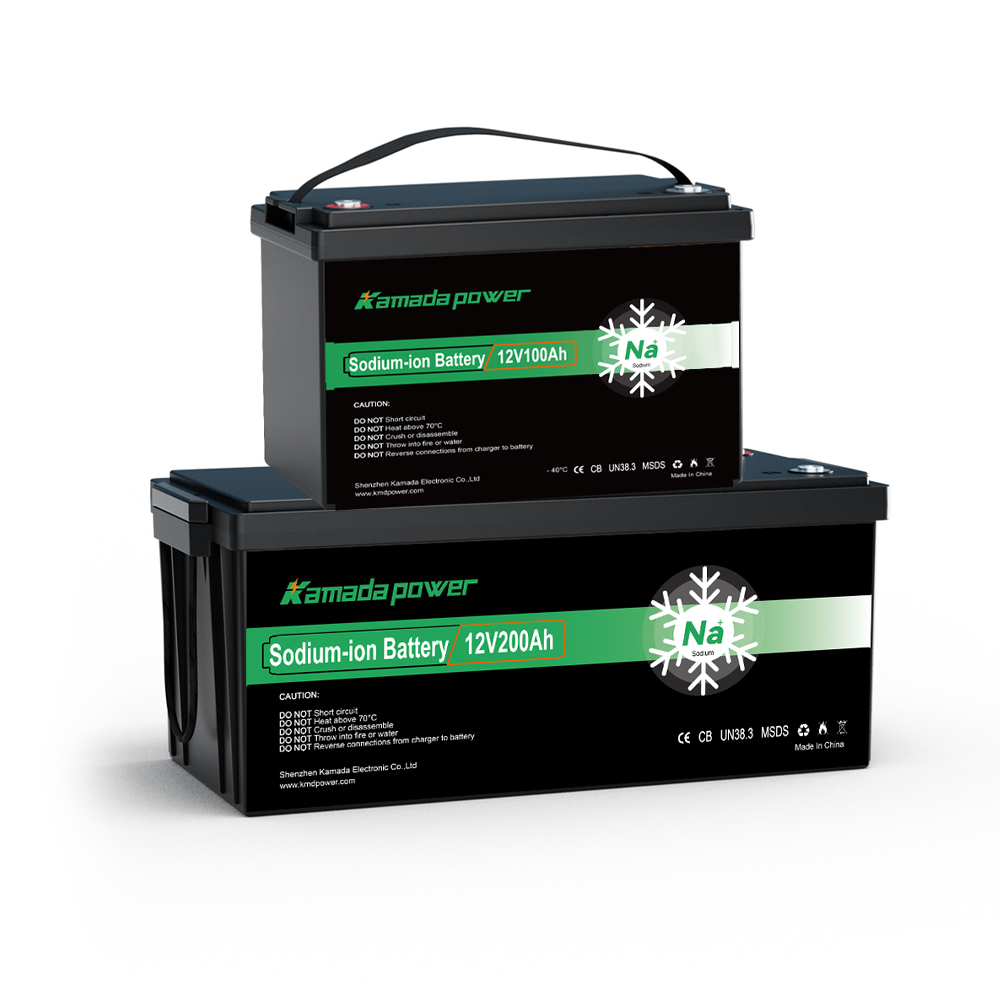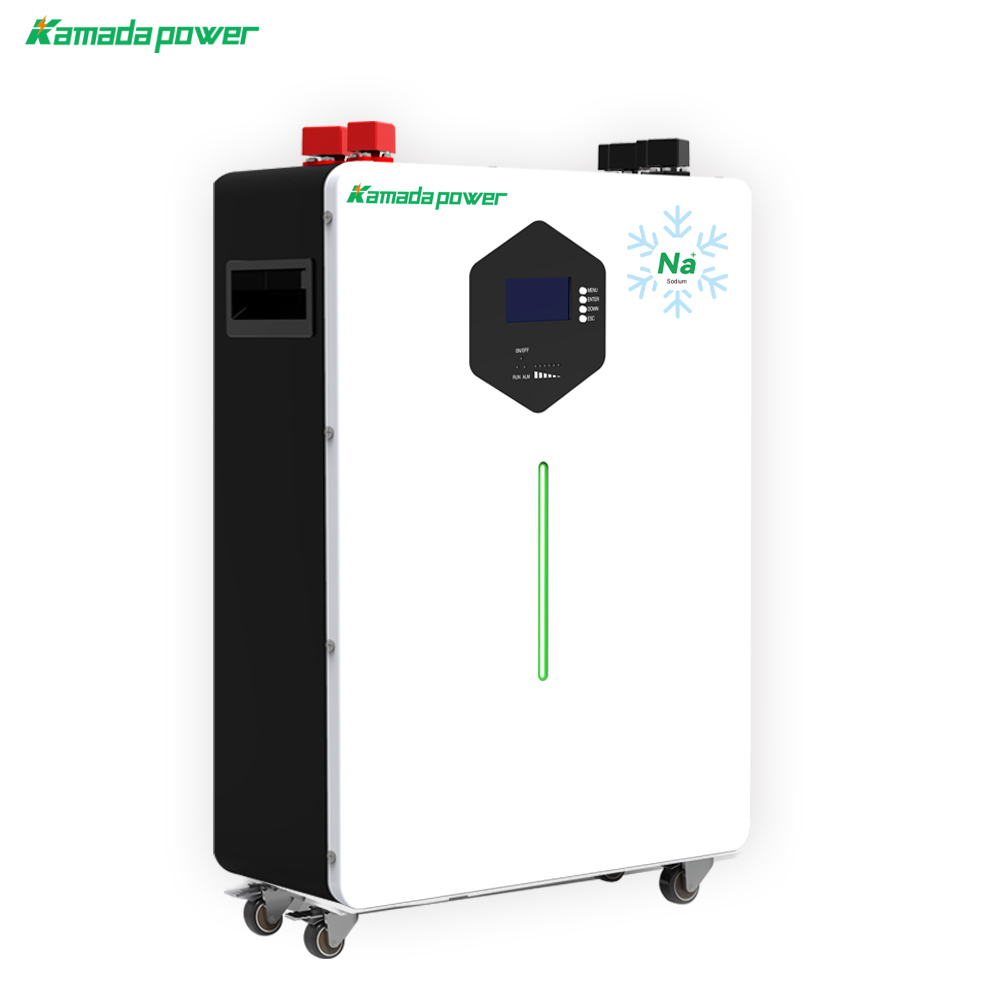Best Practices for Sodium-Ion Battery Maintenance. Your company has recently deployed electric forklifts or a commercial ESS powered by sodium-ion batteries (SIBs). With this new technology in place, your team naturally asks: What is the correct maintenance procedure?
Traditional playbooks for lead-acid or lithium-ion batteries may not fully apply. Sodium-ion batteries are generally more robust, but their specific operational differences are often misunderstood. Ignoring proper maintenance protocols could impact uptime and total cost of ownership (TCO).
In this guide, I will provide evidence-based steps to maintain your Sodium ion battery packs for optimal performance and long service life, drawing on real-world experience with industrial clients.

12v 100ah sodium ion battery

Kamada Power 10kWh Home Sodium ion Battery
How Sodium-Ion Chemistry Changes the Maintenance Game
The need for different maintenance rules stems directly from the battery’s chemistry. First, remember that “sodium-ion” is a family of chemistries, just as “lithium-ion” covers LFP, NMC, and others. Commercial-grade cells in industrial equipment share key traits, but details vary by specific anode/cathode design, electrolyte, and cell form factor.
Ions in a battery act as charge carriers. In Sodium ion battery, these carriers are sodium ions. They are larger and more abundant than lithium ions, which creates several structural differences:
- Robust Anode/Cathode Structure: Hard carbon anodes are common in commercial sodium-ion batteries. The material’s disordered structure is forgiving and experiences less mechanical stress than graphite anodes under full discharge. Many Sodium ion battery designs also use aluminum collectors instead of copper, which reduces the risk of copper dissolution during deep discharge. This tolerance to deep discharge is higher than in some lithium-ion chemistries, but “tolerant” does not mean “immune” — repeated 0–100% cycling can still accelerate other aging pathways.
- Low-Temperature Performance: Certain sodium-ion chemistries and electrolytes show superior low-temperature ion mobility and capacity retention compared with many lithium-ion chemistries, particularly in industrial-grade cells. Some commercial cells maintain approximately 70–80% of rated capacity at −20°C (−4°F), though exact values depend on the specific cell design and manufacturer.
Operationally, sodium-ion batteries are generally more forgiving. They need less intensive management than many lithium-ion packs, but following these best practices will still improve cycle life and reliability.
Charging Best Practices: The Dos and Don’ts
1. The Golden Rule: Use the Correct Charger
Always use the charger specified or certified by the battery pack manufacturer. Sodium ion battery have different nominal voltages and charging algorithms compared with lithium-ion packs. Using an incorrect charger may cause incomplete charging, trigger BMS errors, or bypass safety protections. While adjustable lithium-ion chargers could theoretically be configured to match a Sodium ion battery pack, this requires careful engineering validation. Manufacturer-certified chargers are the safe default.
2. Optimal State of Charge (SoC) for Daily Use
Teams familiar with the “20–80% rule” for LiFePO4 or NMC batteries can relax this practice for many Sodium ion battery. Certain commercial-grade Sodium ion battery tolerate routine full cycles (0–100%) without accelerated degradation typical of some lithium-ion chemistries.
However, the precise impact depends on cell design, temperature, and C-rate. For long-term optimization, operating within a 10–90% window may yield small improvements in cycle life — a beneficial practice, not mandatory.
3. Charging Speed (C-Rate): Fast vs. Slow
C-rate measures charge or discharge speed. A 1C rate means a full charge takes one hour. Many modern Sodium ion battery support fast charging (≥1C), but heat accelerates degradation for all batteries. For fleets charging overnight, a slower 0.5C rate reduces heat and stress, helping extend service life.
Discharging and Storage: Leveraging Sodium ion Battery Strengths
1. High Tolerance for Deep Discharge
Sodium ion battery handle deeper discharge better than many Li-ion chemistries, making them suitable for marine backup power or off-grid solar where full depletion may occur. However, “tolerant” is not “invulnerable”: use deep discharge primarily for recovery scenarios rather than routine operation. Always follow manufacturer-recommended DoD guidelines.
2. Long-Term Storage Made Simpler
Preparing Li-ion batteries for long-term storage is complex. They often need ~50% SoC and periodic checks.
are more flexible. For extended storage, setting the battery to a low SoC (approximately 5–20%) is generally advised, as this reduces parasitic reactions and capacity loss. Avoid storing at absolute 0V for months, unless the manufacturer explicitly validates the cell chemistry for long-term 0V storage.
Temperature Management: Your Guide for All Seasons
Operating in the Cold
Sodium ion battery excel in cold conditions. Certain commercial-grade packs maintain 70–80% capacity at −20°C (−4°F). Some advanced models even reach higher retention, depending on cell design. For operations in cold storage or Northern Europe, this offers a significant advantage.
Expert Tip: Even though Sodium ion battery perform well in the cold, it’s best to allow frozen batteries to warm above 0°C before charging. BMS protections often block unsafe charging, but habitually following this practice is wise.
Handling Heat
Heat accelerates chemical degradation in all batteries. Sodium ion battery are no exception. Elevated temperatures may degrade the electrolyte or electrode interfaces faster. Avoid prolonged operation or storage above ~40–45°C (104–113°F), depending on manufacturer specifications. Proper ventilation for ESS or charging stations is effective and low-cost.
Sodium-Ion vs. Li-Ion Maintenance at a Glance
| Feature | Sodium-Ion Battery (SIB) | Lithium-Ion Battery (Li-ion, e.g., LFP/NMC) |
|---|
| Safe Discharge Level | Tolerant of 0% for recovery; avoid routine deep discharge | LFP: 0–100% acceptable; NMC/Graphite: avoid <20% |
| Long-Term Storage SoC | 5–20% recommended; avoid absolute 0V for long durations | 40–60% typical; crucial for NMC |
| Cold Weather Performance | Excellent in many commercial cells (70–80% @ −20°C) | Significant capacity loss in most chemistries |
| Cycle Life Philosophy | Full cycles tolerated, follow manufacturer guidelines | Partial cycles preferred for high-nickel Li-ion; LFP tolerates full cycles |
| Safety Risk (at 0% SoC) | Low at cell level; recovery may be slower after long storage | Over-discharging poses higher risk in sensitive chemistries |
Physical Maintenance and Safety Checks
Some best practices apply universally. Schedule visual inspections for damage, keep terminals clean, apply BMS firmware updates, and isolate any damaged pack immediately.
Conclusion
Switching to sodium-ion technology is a strategic move, but it requires a shift in maintenance mindset. Sodium ion battery are not just a low-cost alternative to lithium-ion; they are a robust technology with different operational rules. Understanding strengths such as deep discharge tolerance and cold performance simplifies operations and improves return on investment.
Ready to leverage these advantages for your specific application? Our engineering team specializes in custom sodium-ion battery solutions. Contact kamada power today to discuss your project requirements and get a tailored quote.
FAQ
Q1: Can I use my old LiFePO4 charger for a sodium-ion battery pack?
No. Voltage profiles and charging requirements differ. Use the charger supplied or certified by the manufacturer.
Q2: How long does a sodium-ion battery last in industrial use?
Performance depends on the application. Premium Sodium ion battery packs are designed for ~2,000–4,000 full cycles with >80% capacity retention, depending on DoD, C-rate, and temperature. Single-shift industrial operations may see service life exceeding 10 years.
Q3: Can I leave sodium-ion equipment plugged in overnight?
Modern Sodium ion battery packs with BMS stop charging automatically when full, preventing overcharge. Unplugging after charging is still a good practice to minimize minor heat from the charger.